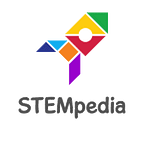STEM in 5 years: How can Teachers Contribute
STEM education has received a lot of appreciation in the past few years. And it’s safe to say that the possibilities of its growth are ever expanding. With the passing of time, STEM has made itself quite comfortable among various other teaching techniques. That being said, STEM education teachers play a vital role in this continuum of growth.
STEM education programs have acquired a considerate amount of audience till now and there’s no saying that it will stop any time soon. Its hallmark of “hands-on learning” is always enough to reel institutions, independent teachers and mentors into the unlimited possibilities of creative teaching it presents.
Teachers: the Torch Bearers of STEM
Among everybody else, the most supportive and excited about this trend of advancement are the teachers all over the world. STEM allows educators to give their teaching an edge. It gives them the window to personalize their teaching techniques, and to directly connecting with their students. Keeping this in mind, there is a major incentive in place for teachers to help with the growth of STEM. Along with the livelihood it presents, the outcome of teaching STEM surpasses the material satisfaction, both for teachers and kids. E School news says that with adequate teacher education, students with become fluent in coding. They also go on to write that STEM might just turn to STEAM in a few years (A, here, stands for Arts).
In a blog post for the American Institutes for Research (AIR), Courtney Tanenbaum shares her perspective on what STEM would look like in schools in the next ten years. She talks about how high school students would be working with national tech companies to solve real-world problems.
She also talks about STEM 2026: A Vision for Innovation in STEM Education and says that every student has the right to an authentic and foundational STEM education as part of their academic experiences.
What Can Teachers Do?
There are various factors that affect the growth of STEM in education sectors all over the world. One of them is how teachers perceive STEM. Teachers’ perception of learning influences the way they teach and their attitude towards teaching has a direct impact on how much attention students can garner in the classroom.
Then, comes the curriculum that is being used. An effective STEM curriculum consists of relatively more teamwork by students, engagement in discussions, a showcase of the work that students put in for projects, providing knowledge about the career prospects associated with STEM. Along with these primary objectives, the application of what students learn in real-world problems should be explained to them in an elaborate manner.
These things are extremely important for the growth of STEM education in the community of technology inspired learning and teaching. And teachers make this kind of STEM application possible. In the long run, this engagement of teachers is going to do wonders for STEM.
After this, there are DIY learning projects. The new generation, The Gen-Z, which was born and brought up surrounded by technology, associates itself with the digital world a lot and expects technology and interactive learning experiences to play a vital role in the journey called education. Therefore, Educators need to inculcate hands-on experience in the academic programs to captivate the students’ interests. DIY projects are a very smart way to inculcate STEM education in classrooms. They are fun, informative and filled with practical application. These properties of DIY projects complement the objective of STEM. Hence, it’s crucial that teachers use DIY in their lessons. It’s also essential for students to have exposure to extended learning and to have direct contact with STEM professionals. These are the things that teachers can incorporate into their teaching schedules.
A study conducted by Barnes and Noble College surveyed 1300 high school students across the United States. The main objective of the survey was to understand the trends of education among Generation Z (referring to individuals born in the years 1990 to 2000). The study sets a very strong emphasis on engagement in academics. About 64% of students strongly recommend the use of discussions in class which make their importance evident. About 81% of students of those who were surveyed make a direct statement that they learn the best by remaining engaged with what is being taught. This includes the use of online resources, being in touch with friends and do-it-yourself techniques.
However, because of its ever updating nature, teachers will always need some guidance with STEM. It can be overwhelming and that can lead to compromising their actual teaching abilities. Hence, educational institutions looking forward to a STEM integrated system in their classrooms should keep informational seminars for their teachers. They should keep their educators updated with everything that is happening in the world of technology operated teaching. If you’re a teacher and would like to learn about how you can adapt to STEM with competence, you should go through this.
In a Nutshell
The STEM learning center is expanding with speed and teachers are keeping up with the pattern with immediate effect. Most factors responsible for the growth of STEM depends upon teachers and so far, they are doing an excellent job. Educators, with their learned expertise, are taking STEM education to unfathomable heights as compared with ordinary teaching techniques. And it doesn’t look like they are going to stop.
Psst. A little something before you leave!
Thank you for taking out the time to read this blog! If you enjoyed reading it and would like to read more about educating in the modern world, go check out these blogs as well!
